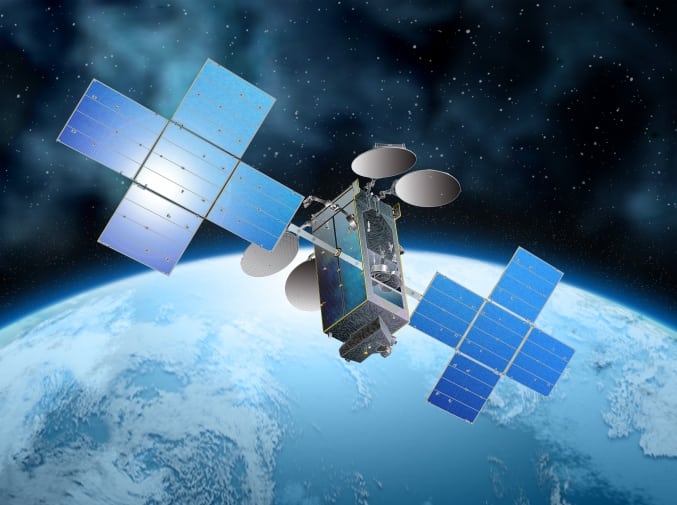Latest News

Rendition of EchoStar24/Jupiter 3 satellite. Photo: Maxar
Hughes Network Systems announced Thursday that the Jupiter 3 satellite successfully deployed its solar arrays and antennas and passed readiness testing by manufacturer Maxar Space Systems. Hughes is now testing the satellite communications with ground equipment.
The satellite, which SpaceX launched in late July, is moving closer to commercial service. Parent company EchoStar said in the most recent financial update that it’s expected to enter service in December.
The satellite will bring more than 500 Gbps of additional broadband capacity across North and South America. This capacity will support HughesNet satellite internet plans, in-flight Wi-Fi for airline passengers, enterprise networking, and cellular backhaul for mobile network operators (MNOs).
Earlier this month, Hughes announced a deal with Delta Air Lines to connect 400 regional jets with in-flight internet.
“Reaching this milestone demonstrates the engineering excellence and innovation our team infused into this satellite,” said Hamid Akhavan, CEO of EchoStar. “As the largest commercial satellite ever built, Jupiter 3 will double the capacity of our fleet serving more customers who live beyond the reach of cable and fiber internet by providing ubiquitous connectivity throughout the Americas.”
Maxar described the size of the satellite as having a 9 metric ton launch mass and 14 expansive solar panels that when fully deployed “could span a 10-story building.”
“Jupiter demonstrates that the Maxar 1300 platform is the ideal platform to support any variety of high-bandwidth communications missions, including deep space missions like NASA’s PPE program, which is part of Gateway,” said Chris Johnson, Maxar Space Systems CEO.
Maxar recently split its spacecraft manufacturing and Earth imagery businesses into two businesses.
Get the latest Via Satellite news!
Subscribe Now